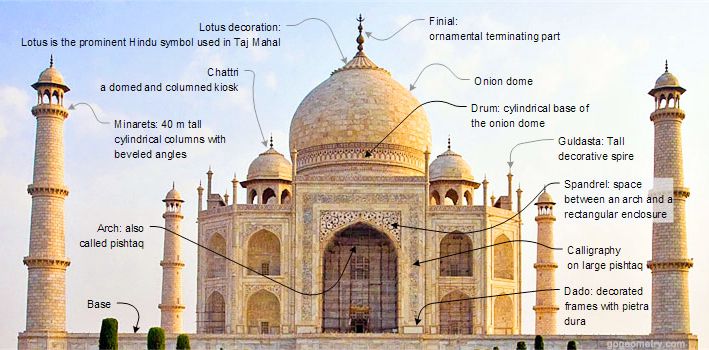Search here

19-Mar-2024, Updated on 3/20/2024 7:23:00 AM
What Taj Mahal is? a Hindu Temple or a Palace or Part of Twin Temple
Playing text to speech
At this moment, the seventh wonder of the world, an amazing architecture known to be a symbol of love, the Taj Mahal in Agra, is on the verge of experiencing a big revelation. There are numerous lawsuits presented in courts, that claim its Hindu origin, and go on in the background of history. These reports were drafted carefully after thorough research having enough evidence, and indicating that the origin of the Taj Mahal is not from the Muslim dynasty, but it is actually a Hindu temple.
Now the Taj Mahal may be declared as the official Hindu temple and making it officially Hindu- is not simply a matter of semantics; this is a huge shift that promises to change our views about India's cultural heritage. The huge admiration for the Taj Mahal as a sign of Muslim artistry has been there for centuries, but there is a history between its marble face that waits to be discovered.
Disagreement with Muslim Origin
The known portrayal of the history of the Taj Mahal claims that it was constructed by the emperor Shah Jahan. It is said that he built the Taj Mahal as a tomb for showing his love for his late wife Mumtaz Mahal. And that it was constructed by 20000 workers in duration of 22 months. But I am against this and my belief is backed up not by assumptions but by a number of proven facts. They are neither casual nor unrelated, but rather significant evidence of the historical and symbolic nature of the temple's origin.
The fairy tale story told through the historical record of the Shah Jahan building the Taj Mahal as the tomb of Mumtaz Mahal does not show the Taj Mahal's true history. Even though the story inspires people’s public mode of thinking, on the contrary, a more detailed investigation exposes a story that has been hidden behind historical fabrications and misconceptions for ages.
Historical Evidences

Looking into old documents, we find a lot of signs showing that the Taj Mahal is indeed a Hindu monument. From the Sanskrit origin of its name, "Tejo Mahalaya" to the presence of architectural features which belong to the Hindu religion like the trident (Trishul) pinnacle on the dome and the sacred, esoteric Hindu letter “OM.” carved on the exterior of the wall of the sanctum sanctorum now occupied by the cenotaph, all these evidences craft a fascinating story. The claim of Dr. P.N. Oak, who is a well-known historian, is also substantiated by his careful researches, which throw light on the temple's origin as a Hindu temple of great antiquity.

The story of the Taj Mahal reaches back to the last time when it used to be an ancient Hindu temple called Tejo Mahalaya—a temple in which Lord Shiva’s worship was centered. Among the Shivalingas, or stone representations of the Hindu god Lord Shiva, is the "Tej-Linga," according to the well-known Hindu architectural work Vishwakarma Vastushastra. The Taj Mahal, which was actually known as Tejo Mahalaya, got its name from the consecration of a Tej Linga in that location.
The Complete Story
The story of the Taj Mahal is a thrilling genre that emerges as a combination of judgment and disclosure. Against the general opinion, it was not established by Shah Jahan who was the Emperor but it existed since the Middle Ages as a Hindu temple with a unique history. Eventually, this sacred place evolved and, in the end, it was taken over for use as a mausoleum—a story that is controversial, and it should just depict its real heritage.
The king of Jaipur, Raja Man Singh played a leading role in the process of building the Taj Mahal, which can be considered one of the most important parts of its history, to a great degree. Raja Mansingh's palace was a great residence of unparalleled magnificence, crowned with a dome (Imaarat-a-Alishan wa Gumbaze). It was taken from the Jaipur Maharaja Jaisigh for Mumtaz's funeral, according to Shahjahan's own court chronicle, the Badshahnama (page 403, vol. 1). In any way, the reasons for this whether it was arranged under diplomacy, was a goodwill gesture, or a forced trade, still remains a mystery.
Raja Man Singh, involved in the history of the Taj Mahal, brings even more intricacy to the plot, which suggests that a complete reexamination of its background and meaning in high order is long due. Through further analysis of historical details, we can pull the curtains away from the secrets of this mysterious monument.
J.V. Tavernier's Travelogue
J.V. Tavernier, a French traveler of the 17th century, also confirms other theories of the Taj Mahal's Hindu origin. His French travelogue, which tells that he actually never witnessed the building process, is a moving demonstration that those English versions are wrong.
In this translated document, J.V. Tavernier provides important details about the building of the Taj Mahal which is a widespread version of his Muslim construction believed by the Indian Muslim culture. His travelogue remained the true light guiding the journey and made people believe that the Taj Mahal was created by Shahjahan but that is not true.
Time to unveil the truth

While the volume of facts keeps increasing, a question that everyone is trying to seek answers to is why the government has not done any proper investigation into the matter. This investigation should be carried out with impartiality, resilience, and reliability, independent of any political or religious prejudices. It should finally disclose the truth that had been kept in the dark for ages. The Taj Mahal's true heritage can only be discovered by digging through history with a deep search, and only then the truth behind its origin can be found.
Update the historical interpretations
The background of the Taj Mahal over time has been colored by the different biases communicated at different times. The correction of these misinterpretations is important so that people around can have the right information about the cultural heritage of India. The first education minister of India, who was actually from Saudi Arabia might not have understood Indian culture whole at that time, indicating that reevaluation of historical narratives and facts in all the educational sources is needed. By finding the true origin of the Taj Mahal and crowning it as a national symbol of India's rich and diverse heritage, we can honor the legacy of our forefathers and ensure a more truthful, transparent, and knowledgeable tomorrow for everyone.

Comments
Solutions
Copyright 2010 - 2024 MindStick Software Pvt. Ltd. All Rights Reserved Privacy Policy | Terms & Conditions
